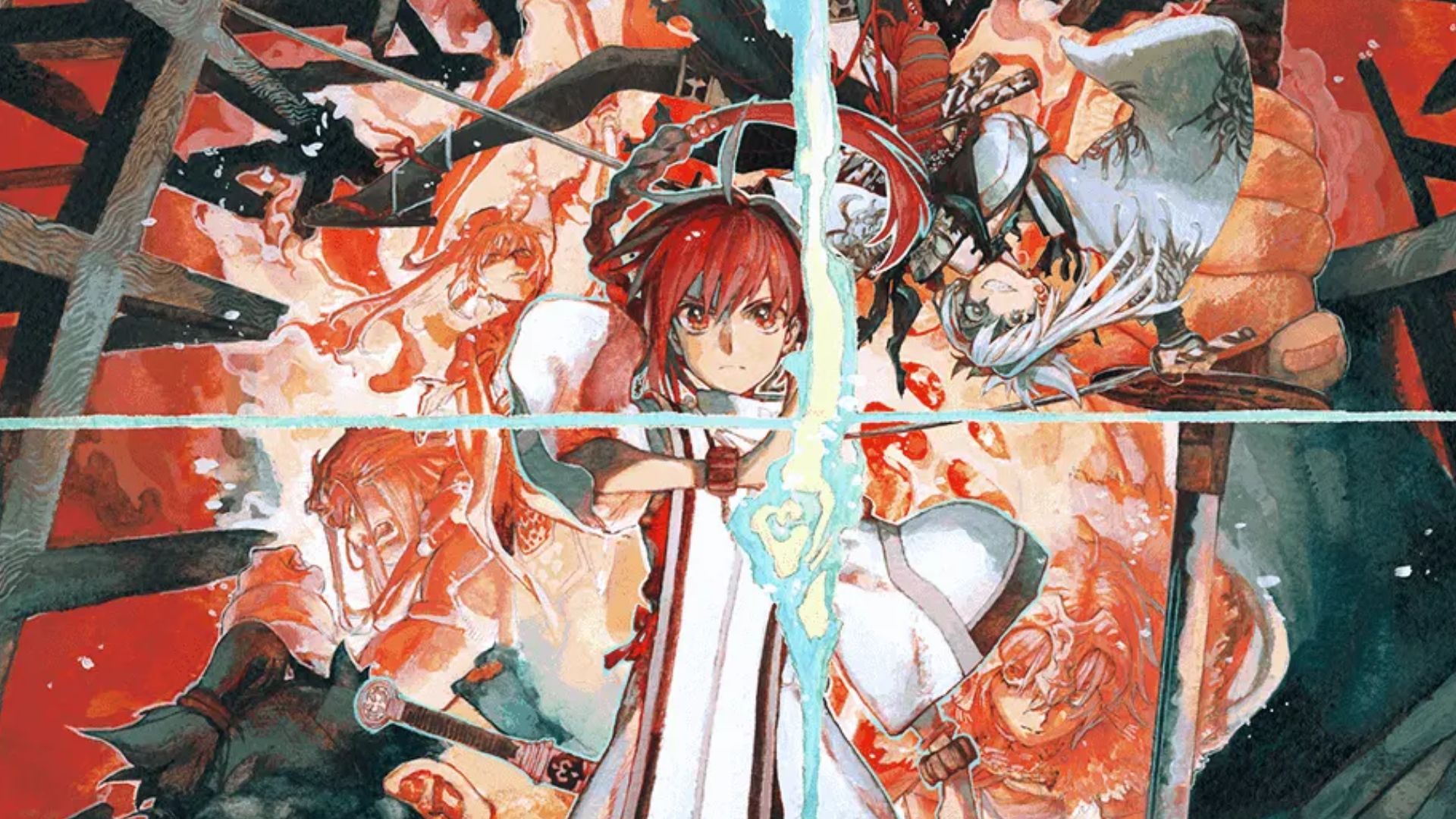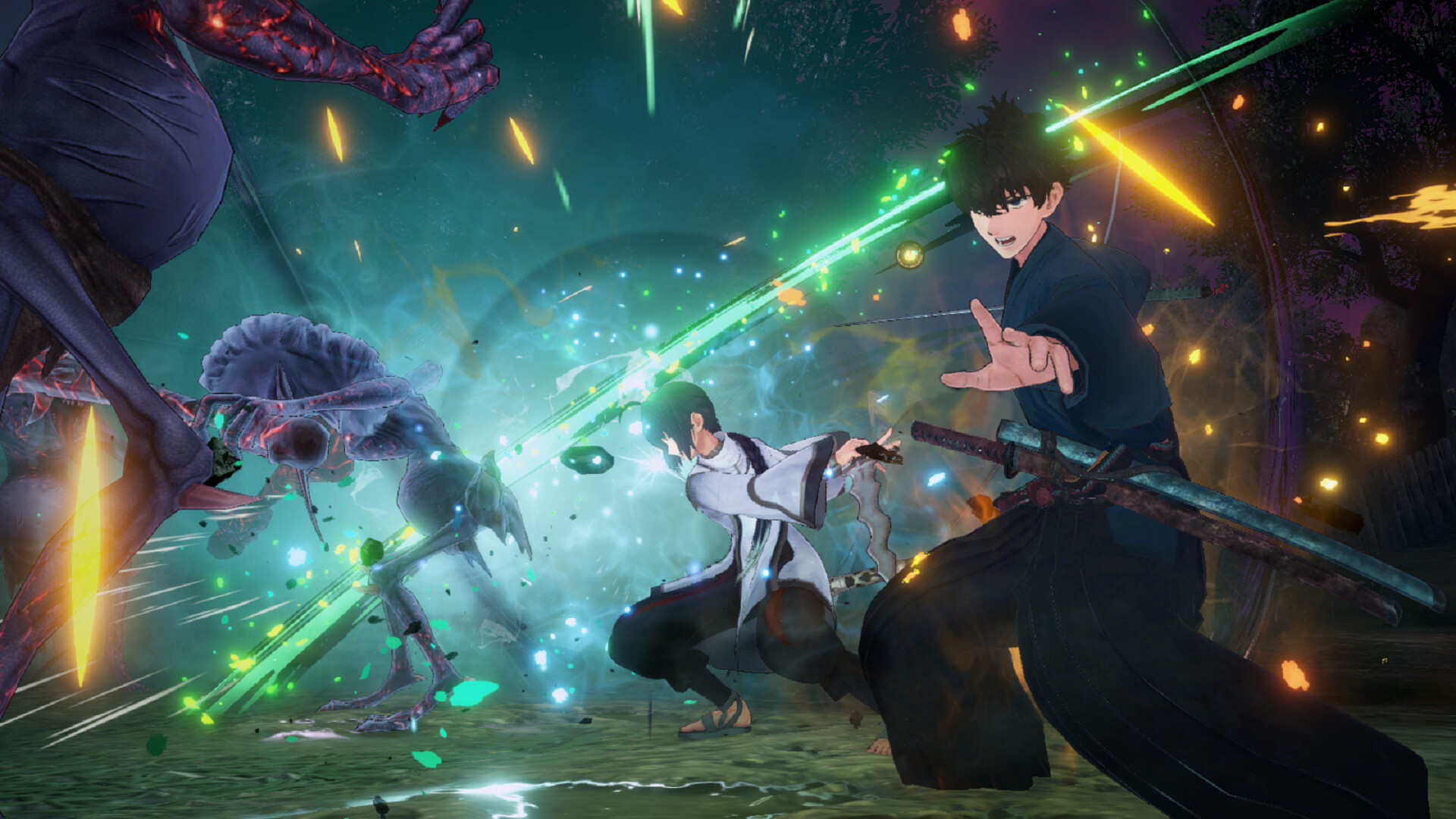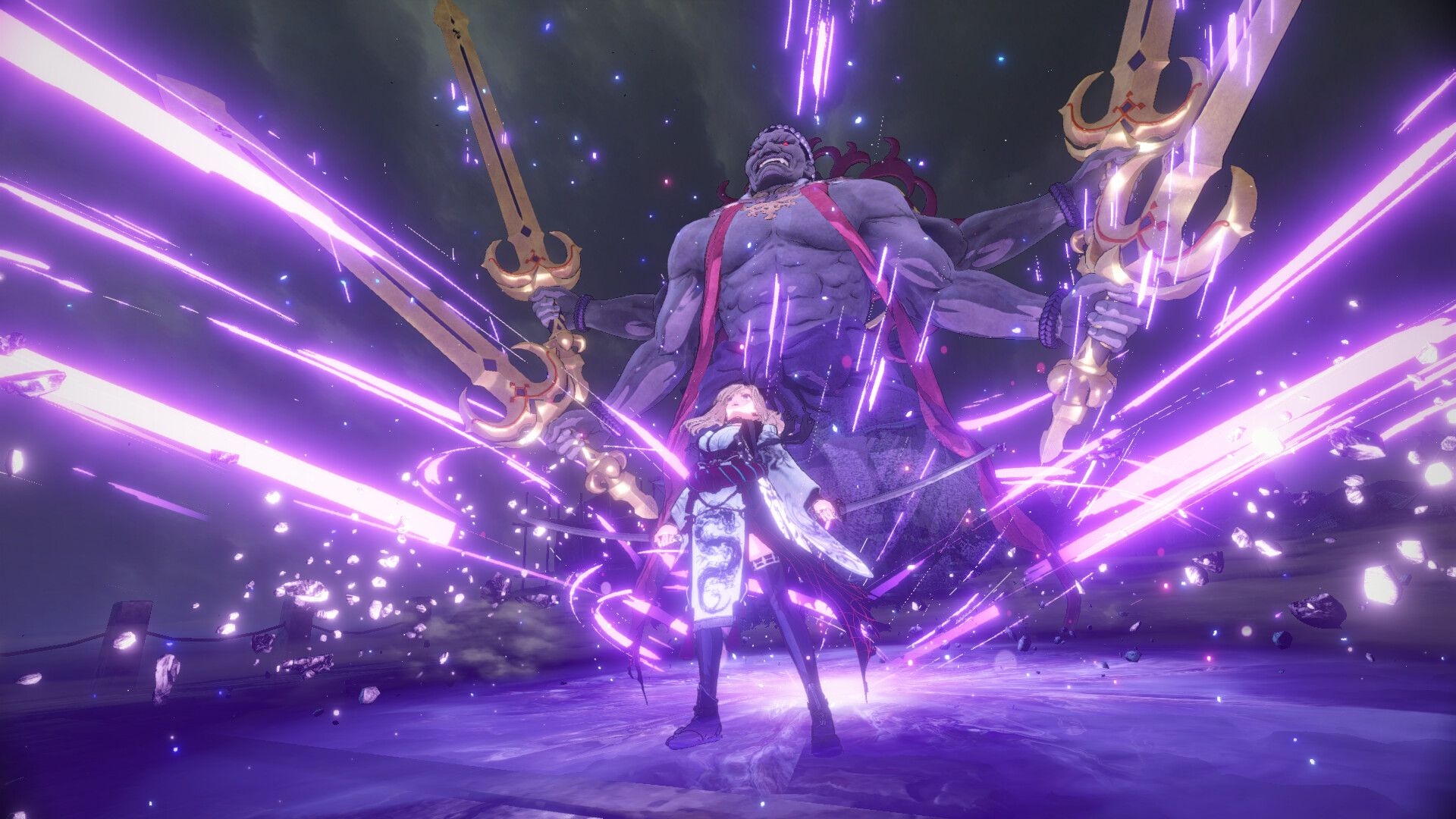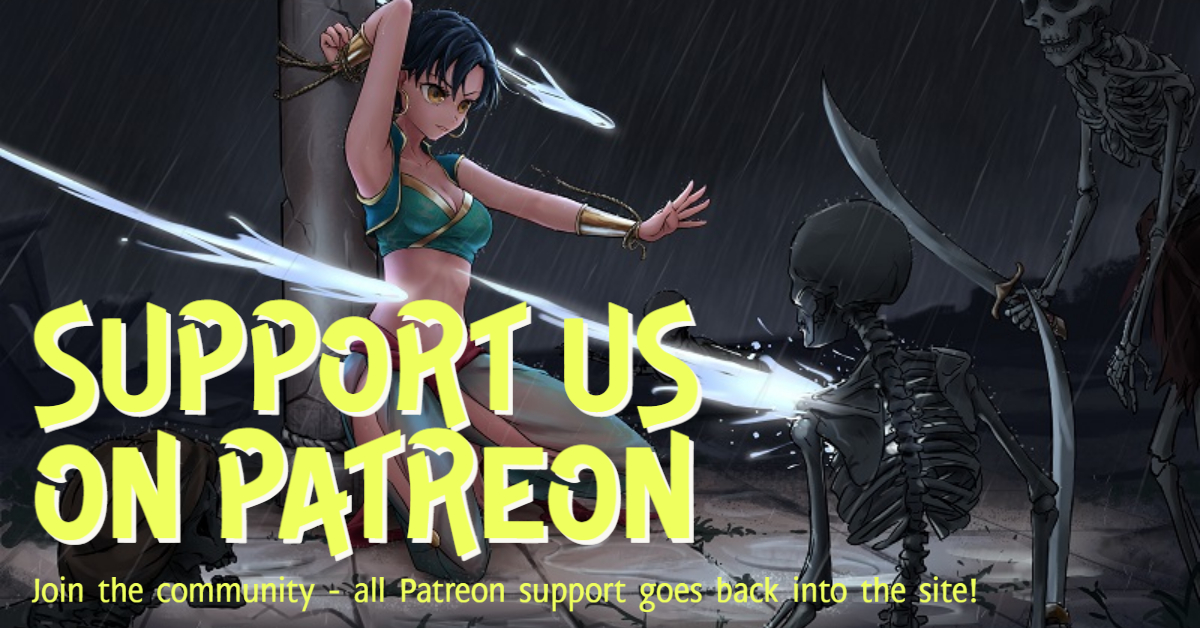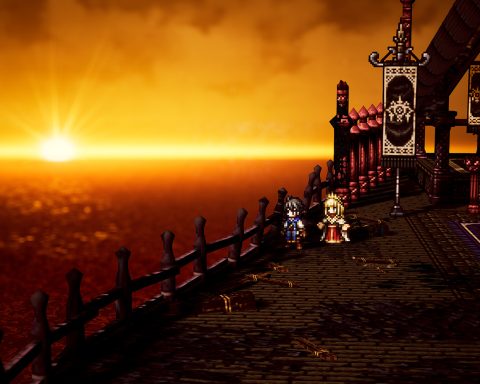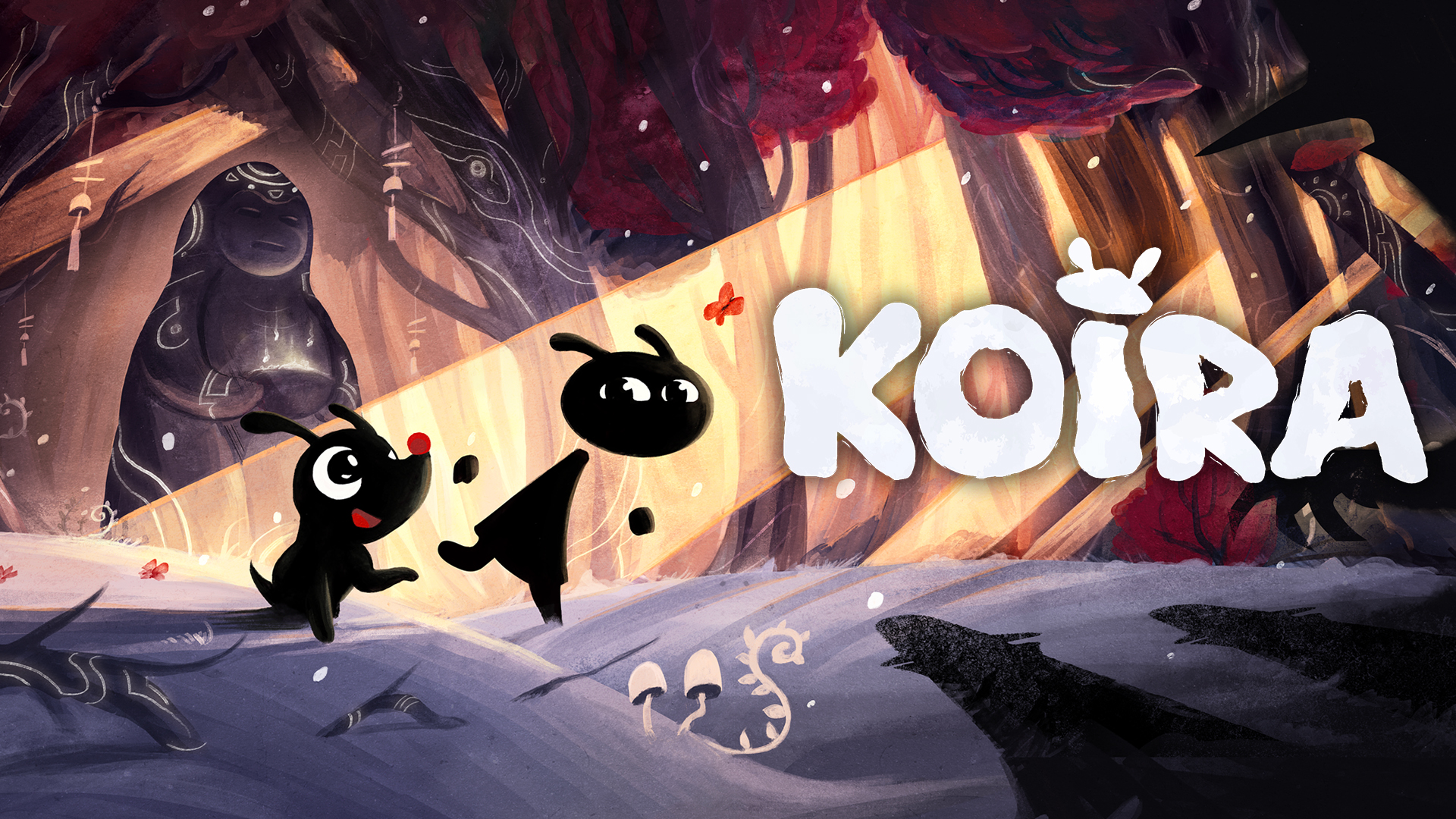Of the list of licenses that I have always thought would excel with Koei Tecmo’s Musou formula applied to it, Fate is right up there with Sailor Moon, Lord of the Rings, Star Wars, and Game of Thrones. It has everything that a great Musou needs – an excellent range of characters and potential fighting styles, the opportunity to blend fan service in with an original story, and an approach to action that fits with the “1 vs. 1000” core philosophy of Musou. It’s a series filled with impossibly powerful, God-like heroes and their willingness to cut through the rabble to take on one another. And now that I’ve had a solid chunk of hands-on time with Fate/Samurai Remnant, I’m very happy to confirm that I was right about that. This will be an excellent game.
To say up-front, however – this is a significant departure from most other Musou. Fate/Samurai Remnant has a combat system that is going to be familiar to anyone that has ever played Samuri Warriors or Dynasty Warriors, but outside of combat, it’s closer to something like Persona 5 Strikers. In fact, an even better way of thinking about it – at least in the first couple of hours of it – is that it’s like Like A Dragon: Ishin. However, instead of the Yakuza brawler combat system, you instead have Musou-like combat.
So far – and for all I know it will change after you move past Chapter 1, where my demo tapped out (though I doubt it will) – you wander around a Keian-era city (17th century) take on Edo, chatting to people, hitting up the shops and following a trail of breadcrumbs from one major battle to the next. Every so often you’ll run into an enemy in the town, and then about 50 more will pop out of nowhere, giving you the chance to participate in some classic Musou-like combat. Defeat them and move on. There’s the occasional narrative segment where the combat sequences are longer. However, for the most part, it feels like the developers saw the Yakuza series and this is their spin on it.
I must admit that I am mildly disappointed that the decision was made to place the game in Keian-era Japan. It’s not that I have anything against that era, of course. Rather, it’s just that this is such familiar territory for Koei Tecmo at this point. We’ve already got Samurai Warriors AND Nioh for our swords-and-sorcery take on samurai-era heroics. Would it have really been so hard to just place the Fate game in the modern era?
Or perhaps I’m just bummed out that I won’t get to hang out with Rin Tohsaka. That is always what I look forward to with Fate stuff…
But I digress. Aside from the setting, Fate/Samurai Remnant is brimming with vintage Fate quality. There are seven “casters” that have been granted seven “servants” with which to do battle and only one can survive the grand combat. You play as Iori, a one of the casters – and a particularly weak one at that. Despite sharing his surname with the great warrior, Iori has picked up few of those sword skills himself. His warrior companion is Saber (of course), and the first-up adversaries are Rider (or was it Berserker – I actually can’t remember), and Lancer. These heroes have “casters” with exactly the kind of rivalry towards Iori that you’d expect if you’ve had any experience with Fate whatsoever.
Just in case this might sound like a criticism: the highly traditional approach to Fate storytelling is really appealing overall in Fate/Samurai Remnant. The other Fate Musou-likes (that were not produced by Koei Tecmo) leaned heavily into science fiction and deeper series lore. They were fine for what they were, but you really needed to be a Fate veteran to follow along with them. This one here is – again, so far – much more appropriate as a first Fate experience for those that have somehow avoided the entire property so far (what on earth are you waiting for?). It’s also nice for it to be a simple fantasy story of heroic combat, set in a grounded take on the world.
My big question at this stage is just how much we can enjoy a range of characters through the single-player arc. One of the most appealing things about the Musou formula is getting to play with a bunch of different characters and enjoy their unique quirks within the combat system. The early chapter of Fate seem to suggest that, for at least the bulk of it, you’ll be seeing the story through a single set of eyes. Iori has a good set of attacks and abilities, and an JRPG-like levelling and equipment system which seems appropriately nuanced, but I do hope the other characters are more than a dalliance or something relegated to some secondary mode for the diehards in later chapters.
I won’t be too disappointed if it doesn’t play out that way though, because ultimately this is a game made for Fate/Stay Night fans in particular, and you get to explore a vibrant and colourful take on medieval Japan while enjoying it. Everyone knows how much I love both Musou and the Fate series at this point, so it was perhaps inevitable that I’d love this one, but nonetheless the signs are encouraging that this will be one of my favourite Musou of all once I’ve had a chance to dig more deeply into it.
